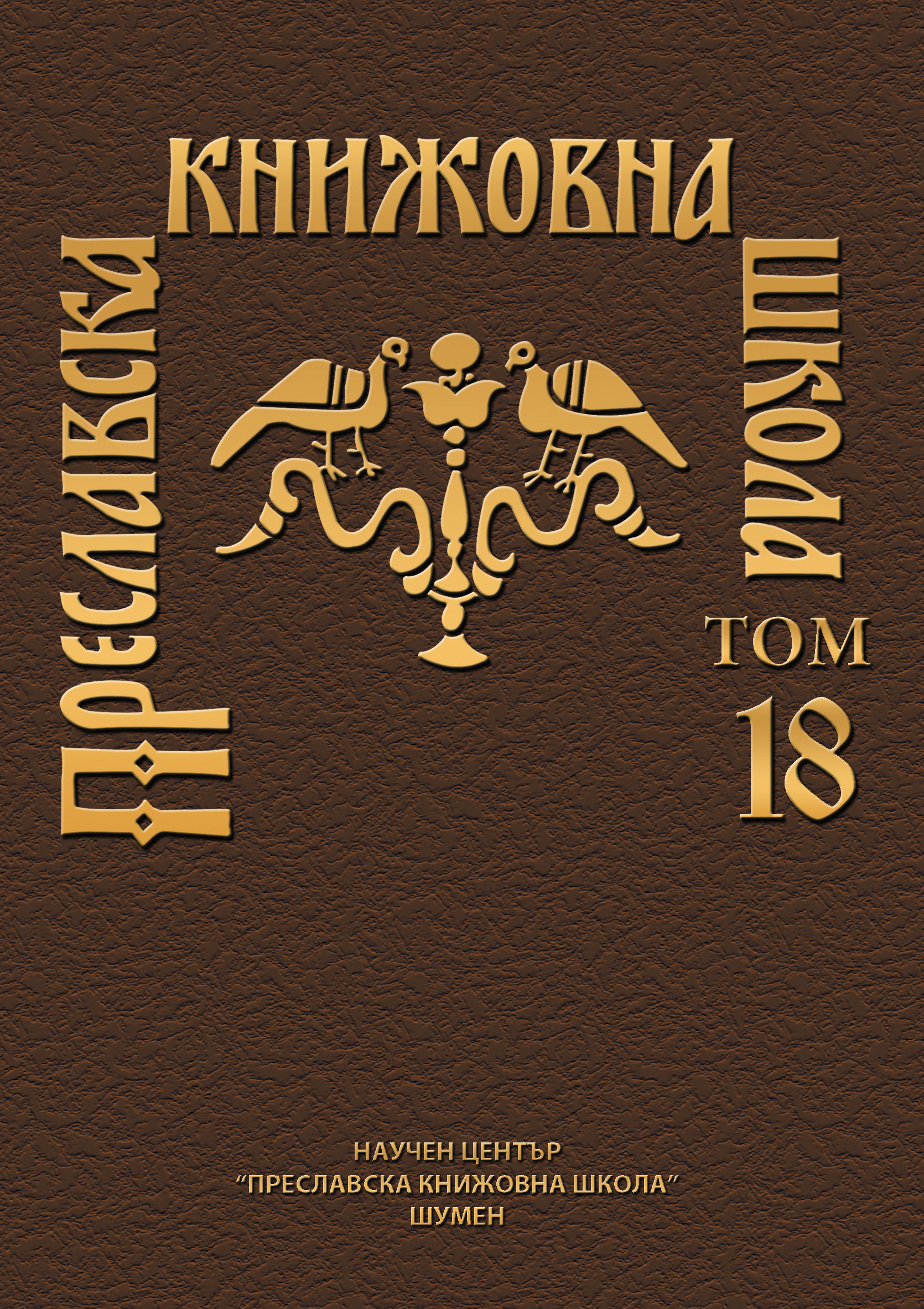ПРОБЛЕМА “ПРЕСЛАВСКОЙ” И “КИРИЛЛО-МЕФОДИЕВСКОЙ” ЛЕКСИКИ В ДРЕВНЕБОЛГАРСКОМ ПЕРЕВОДЕ ХРОНИКИ ГЕОРГИЯ АМАРТОЛА
THE PROBLEM OF PRESLAVIAN AND CYRILO-METHODIAN VOCABULARY IN THE OLD BULGARIAN TRANSLATION OF GEORGE HAMARTOLOS’ CHRONICON
Author(s): Rostislav StankovSubject(s): Language studies, Language and Literature Studies, Eastern Slavic Languages, Philology
Published by: Шуменски университет »Епископ Константин Преславски«
Keywords: George Hamartolos’ Chronicon; Cyrillo-Methodian translation; Preslavian revision of liturgical books
Summary/Abstract: The study consists of two parts. The first part exemines in detail the process of shaping the division of the Old Bulgarian vocabulary into Cyrillo-Methodian and Preslavian. The efforts of scholars from the second half of the 19th century and the beginning of the 20th century were directed to the determination of the oldest, Cyrillo-Methodian translation of the books of Holy Scripture. It becomes clear that the Glagolitic manuscripts, as a rule, contain the older version of the text. The circle of texts of Holy Scripture, translated by the holy brothers, was traced out. At the same time, the scholars came to conclusion that new translations of chet’yi-texts of Holy Scripture with exegesis were made a little bit later. These new translations were referred to the time of tsar Symeon. Thus, the vocabulary characteristic of the original translations of the books of the Holy Scripture necessary to liturgy was revealed together with the vocabulary characteristic of chet’yi-texts of the Holy Scripture. This outlined the future division of the Old Bulgarian vocabulary into Cyrillo-Methodian and Preslavian, or – ‘nonpreslavisms’ and ‘preslavisms’. A turning point was marked by I. Dobrev’s articles – in contrast to precedeng scholars they proclaim the Preslavian (or tsar Symeon) revision of liturgical books. These full of contradictions articles provoked a great number of works devoted to the Preslavian revision of liturgical books. Some of these works (T. Slavova, I. Karachorova, P. Penev, I. Christova-Shomova) were submitted to a critical analysis which revealed an unsustained approach in studying of the Old Bulgarian texts. Thus, T. Slavova claims that though no one manuscript presents the Preslavian revision of liturgical books the revision is a fact and it must be traced out in later Middle Bulgarian and Old Russian manuscripts. Only one author (E. Mircheva) doubts the usefulness of this approach. As some authors support the existing of Preslavian revision of liturgical books referring to George Hamartolos’ Chronicon the second part of the study contains the analysis of lexical material from this chronicle. The analysis reveals that the mere pointing of ‘preslavism’ is not sufficient for localization of the text. The main conlusion of the study is: Preslavian revision of liturgical books never took place, therefore the division of the lexicon to ‘preslavisms’ and ‘nonpreslavisms’ is not justified. The significance of Preslav as a literary centre is in creation of new translations and texts, not in revision of the old ones.
Journal: Преславска книжовна школа
- Issue Year: 2018
- Issue No: 18
- Page Range: 121-155
- Page Count: 35
- Language: Russian

